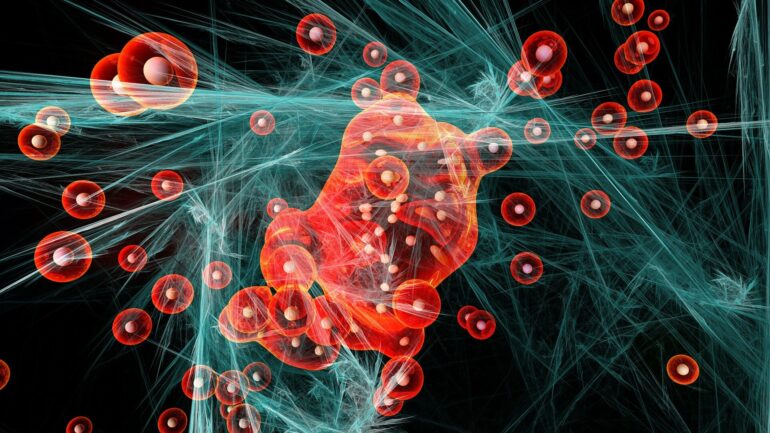A team led by bioinformatics experts Andreas Keller and Fabian Kern from Saarland University together with researchers at Stanford University have gained new insights into manifestations of aging at the molecular level. They found that the process of reading genetic information does not run as smoothly in older individuals as it does in younger ones.
These changes in the transcription process are due to particular RNA molecules that influence the activity of individual genes and thus determine which proteins the body produces—physiological alterations which can have a huge impact on the body’s metabolism. Their research has now been published in the journal Nature Biotechnology.
How and why do our organs age? To help answer this question, a group of researchers from Saarbrücken and Stanford have been studying a part of the molecular mechanisms that underlie aging. A team led by Andreas Keller, Professor of Clinical Bioinformatics at Saarbrücken University, examined the organs of mice across the mouse lifespan and found that the amount of small non-coding RNAs (sncRNAs) expressed in the organs differed significantly depending on the age of the mice.
“We’ve identified a number of RNA molecules whose abundance increases with age, as well as those whose presence declines significantly,” said Andreas Keller, who also heads a research team at the Department of Clinical Bioinformatics at the Helmholtz Institute for Pharmaceutical Research, Saarland (HIPS). HIPS is a branch of the Helmholtz Centre for Infection Research (HZI) in Braunschweig and is run jointly with Saarland University.
Some sncRNAs specifically regulate the amounts of messenger RNA molecules (mRNA). These mRNA molecules relay the genetic instructions encoded in the genome (DNA) to a cell’s protein-making machinery. They essentially make copies of segments of the DNA in the cell—a process known as transcription. The mRNA thus encodes the chemical blueprint used to produce individual proteins, which in turn control most of the body’s metabolic processes.
“If you compare the organism’s DNA to a cookbook containing all the protein recipes, the mRNA copies individual recipes from which the corresponding dishes (proteins) are then created,” explained Viktoria Wagner, biotechnologist and lead author of the paper presenting the results of the team’s research. But if the mRNA molecules are blocked by other RNAs, the translatory process is inhibited, with the result that no more proteins are produced.
“If protein production is inhibited, this impacts the metabolism of cells and organs and will ultimately also affect the aging process of the entire organism,” explained Wagner.
The Saarbrücken research team has been able to describe molecular signatures and patterns associated with aging. Some of these molecular signatures are of a general nature, i.e. they were identified in each of the organs studied, others were found to be specific to individual organs.
“One particular molecule showed very strong effects in the liver,” said Professor Andreas Keller, who, together with his team in Saarbrücken, used bioinformatics software to analyze the huge amounts of sequencing data generated. “Further experiments showed the surprising result that some of the mechanisms involved are reversible—at least at the molecular level.”
In future research, the bioinformaticians plan to examine the RNA molecules more closely and hope that they can be used to develop aging markers for certain organs. “By developing this kind of biomarker, we hope to be able to observe the aging process in individuals by screening their blood,” said Keller. This could be a particularly interesting development, as the aging process is still one of the main causes of many of the most common diseases.
Potentially, this could open up a number of other opportunities in biomedicine. “We know that infectious diseases can sometimes put our cells under immense stress and this can accelerate their aging,” said Fabian Kern, a junior research group leader at HIPS.
Kern, who has a doctorate in bioinformatics, was instrumental in developing the software tools used in the study and explained the significance of the current research as follows: “Using the latest machine learning methods and technologies, we can precisely classify the different molecular signaling pathways. From the knowledge gained, we hope to derive new approaches to developing innovative drug products and thus we are already in an early stage of the drug discovery process. While conventional drug agents act at the level of proteins, our approach would involve targeted changes at the messenger RNA level.”
More information:
Andreas Keller et al, Characterizing expression changes in noncoding RNAs during aging and heterochronic parabiosis across mouse tissues, Nature Biotechnology (2023). DOI: 10.1038/s41587-023-01751-6. www.nature.com/articles/s41587-023-01751-6
Provided by
Saarland University
Citation:
Bioinformatics specialists explore the molecular mechanisms of aging (2023, April 27)



